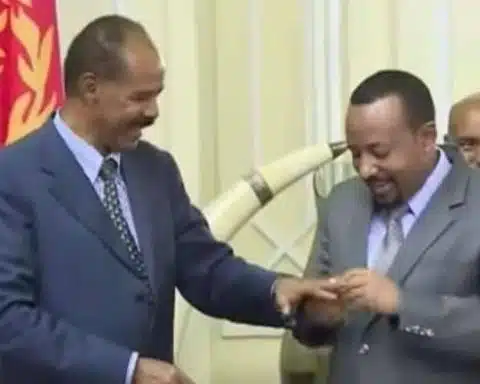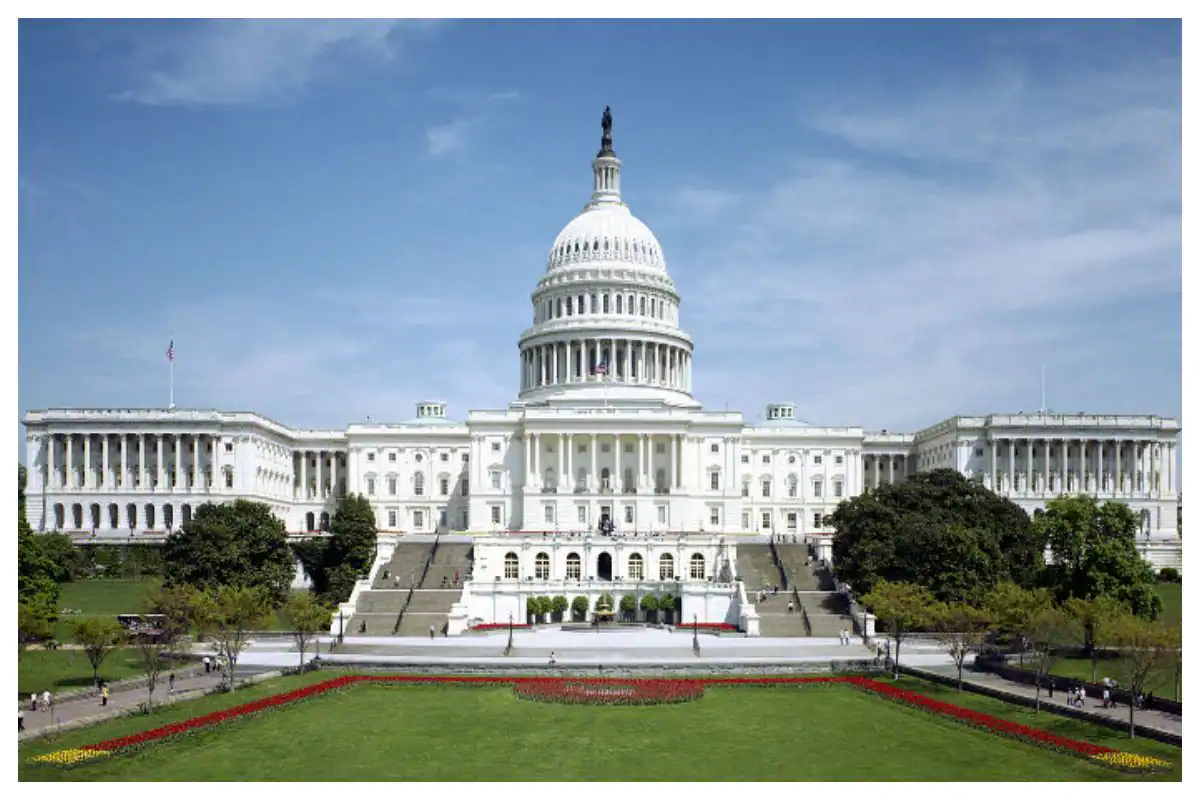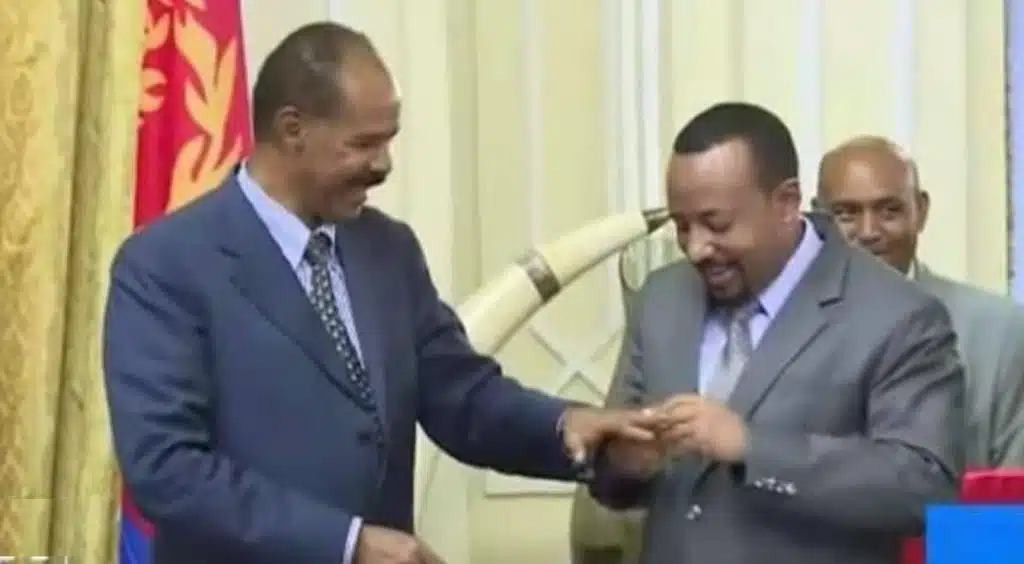Haile M. Larebo
Today, I searched Ethiopian newspapers and social media for any mention of the February 19, 1937, Addis Ababa Massacre—one of the darkest days in Ethiopia’s history. I found nothing.
This absence is alarming. It is not accidental. It is part of a broader pattern of erasing Ethiopia’s history, a process that began with Fascist Italy’s invasion and continues today under the ethno-centric policies of the current regime. The February 19 Massacre was not only an act of brutal genocide by the Italians; it was a calculated attempt to erase Ethiopian identity, resistance, and dignity. Today, history is under attack once again—not by foreign invaders, but by those who have embraced ethnic division as a political weapon, mirroring Italy’s colonial strategy of divide and rule.
The Forgotten Massacre of February 19, 1937
On that day, following an assassination attempt on Viceroy Rodolfo Graziani, the Fascist Italian army, Blackshirt militias, and armed civilians unleashed a three-day campaign of terror on Addis Ababa. Between 19,000 and 30,000 Ethiopians—men, women, children, elders, and clergy—were indiscriminately butchered. Entire neighborhoods were set on fire, churches desecrated, and families wiped out. Among the dead were between 4,000 and 5,000 members of the educated elite, individuals destined to shape Ethiopia’s modernization and steer the country in a new direction.
One of Italy’s most deliberate acts of historical erasure was the destruction and looting of St. George Cathedral, a church built by Italian prisoners of war to commemorate Ethiopia’s victory at Adwa in 1896. This was a direct attack on Ethiopia’s proudest moment—Adwa, where Emperor Menelik II, the father of modern Ethiopia, shattered European colonial ambitions. Italy did not merely kill civilians; it sought to obliterate Ethiopia’s achievements and symbols of resistance. This effort continues today, as Ethiopian history is ignored, distorted, and destroyed under the present regime.
The Vatican’s Role: Complicity and Silence
Many today overlook the Catholic Church’s pivotal role in the Fascist enterprise. While much of the world condemned Italy’s war, the Vatican stood firmly beside Mussolini. The Pope’s response to the Addis Ababa Massacre was silence, if not outright complicity. Rather than denounce the genocide, Pope Pius XI rushed to recognize Italy’s illegal conquest of Ethiopia, making him one of the first world leaders to do so—second only to Adolf Hitler. The Vatican saw Mussolini’s invasion as an opportunity to expand Catholic influence in Ethiopia and actively supported the Fascist occupation.
To this end, the Vatican divided Ethiopia into two strategic zones for exclusive proselytization:
- The Congregation for the Oriental Churches targeted Ethiopian Orthodox Christians, whom they considered “schismatics.”
- The Congregation for the Propagation of the Faith (Propaganda Fide) focused on converting so-called “pagans.”
This arrangement, originally designed to serve Italy’s colonial ambitions, persists even after Italy’s departure. The Catholic hierarchy lauded the Italian army as a divinely sanctioned force, and chaplains blessed soldiers as they carried out massacres. Vatican-backed Catholic missions in Ethiopia provided moral and logistical support to Mussolini’s regime. Despite their stated commitment to humanitarian work, these missions made no effort to defend Ethiopians’ rights or condemn Fascist atrocities. The massacre targeted not only Ethiopian Orthodox clergy but also Protestants, whom the Italians viewed as a challenge to their colonial religious policies.
While the world rightly condemned Nazi Germany’s crimes, Italy never faced justice for its war crimes in Ethiopia. The Vatican never formally acknowledged its role. The fact that Graziani was honored in Italy rather than prosecuted for genocide speaks volumes about the absence of justice for Ethiopia.
The Importance of History: A Battleground for Identity, Justice, and National Dignity
History is not merely a record of past events—it is a battlefield where identity, justice, and national dignity are contested. Those who control the historical narrative shape how people see themselves, how societies seek justice, and how nations define their dignity on the world stage.
- History as a Battleground for Identity
Ethiopia is one of the world’s oldest civilizations, yet colonial narratives have long sought to erase this fact. The victory at Adwa (1896) proved that Ethiopia was the only African nation to successfully resist European colonization. However, Fascist Italy attempted to rewrite that history through terror and propaganda. The erasure of events like the Addis Ababa Massacre deprives young Ethiopians of their historical identity, leaving them vulnerable to foreign influence.
- History as a Battleground for Justice
Unlike the Nuremberg Trials, which held Nazi officials accountable for their crimes, Italy never faced justice for its brutal occupation of Ethiopia. While it paid token reparations, Italian war criminals—including Graziani—were honored in Italy instead of being condemned. Western nations and the Vatican ignored Ethiopia’s suffering because acknowledging colonial atrocities would challenge their global dominance.
- History as a Battleground for National Dignity
A nation without memory is a nation without dignity. When history is forgotten, national unity weakens, and external forces exploit division. Today, the Ethiopian government’s neglect of historical monuments, renaming of places, and suppression of historical scholarship mirror Italy’s colonial strategy of erasing Ethiopian identity. The systematic division of Ethiopians along ethnic lines makes collective memory and national unity nearly impossible.
Why Ethiopians Must Reclaim Their History
A nation that forgets its past forfeits its future. Ethiopia is under attack—not only through war and instability but through the destruction of its historical consciousness. If Ethiopians do not reclaim their history, they will become nothing more than fragmented ethnic enclaves fighting over borders imposed by foreign powers—just as Mussolini envisioned.
The Addis Ababa Massacre Calls Ethiopians to Action
- Commemorate February 19 – Every Ethiopian must know what happened in 1937 and ensure that future generations learn about the Addis Ababa Massacre.
- Celebrate Ethiopian Unity – Reject ethnic division and instead honor Ethiopia’s common history—Adwa, Maqdala, and the struggles that define the nation, including Gura’e, Gundä Gundä, Addi Qarro, and Hergigo.
- Resist Historical Erasure – Challenge the government’s rewriting of Ethiopian history and demand the preservation of national monuments, churches, and heritage.
- Prioritize Nation-Building Over Ethnic Division – Ethiopia’s survival depends on unity. The focus must be on rebuilding the country, not dismantling it from within.
The Fight for Historical Truth is the Fight for Ethiopia’s Future
The Addis Ababa Massacre of February 19, 1937, is not just history—it is a warning about the dangers of historical erasure. The battle for history is ongoing, and if Ethiopians do not fight for the truth, others will rewrite it for them.
Three Key Lessons:
- A people without memory is a people without a future. If Ethiopia’s younger generation does not reclaim its history, it will be lost.
- Remembering the massacre is not about revenge—it is about preserving Ethiopia’s sovereignty, dignity, and historical truth.
- History is power—whoever controls it controls the present and future.
To honor the victims of the Addis Ababa Massacre and to secure Ethiopia’s future, Ethiopians must fight for historical truth.






ይገርማል አንድ ሃገር ወዳድ ዜጋ የሃገር ጥቃት አጥንቱ ዉስጥ ዘልቆ ሲሰማው ሃገር እንዲያስተዳድር የተቀመጠው መንግስት ክ30፣000 በላይ ዜጋ በተገደለበት ክስተት በነ ቀጀላ መርዳሳና አብይ መሃመድ፤ሽመልስ አብዲሳ ትእዛዝ ቀኑ በኢትዮጵያውያን እንዳይታሰብ አንድነት እንዳይመጣ ዘለውታል፡፡ የሚያሳዝነው ጦርነት ለመክፈት ከበሮ በሚደልቁበት ጊዜ ይህ ብሄራው ስሜት የሚፈጥረውን ነገር ወደ ጎን መተዋቸው የድንቁርናቸውን ጥግ ያሳያል፡፡
ይህንን ካልን በኋላ ፕሮፌሰር ሃይሌም ይህን ታላቅ መልእክት በላቲን መጻፍህ ስህተት ባይኖረውም አብዛኛው ኢትዮጵያዊ በሚገነዘበው በአማርኛ ጽፈኸው ቢሆን ኑሮ ቀደም ብለህ ከሰራኸው መልካም ስራ ጋር ተዘግቦ ይቀመጥ ነበር፡፡ መቼም ለሃገር ለምትሰጠው ግልጋሎት ምስጋናችን የበዛ ነው፡፡ የሚገርመው መች እራስህን ወደ ሁኔታዎች እንደምትወርውር ጠንቅቀህ የምታውቅ ምሁር ነህ፡፡ አንተን መምታት ኢትዮጵያዊነትን መምታት መሆኑን የተገነዘብን ገና ከጅምሩ ሊፈታተኑህ ሲሞክሩ ሃገር ወዳዶች ተረባርበው መመከታቸው የቅርብ ጊዜ ትዝታ ቢሆንም ትምቢትህ ሰምሮ አንተ ላይ የተነሱት እንደጉም በንነው እንደ ባቢሎን ቋንቋቸው ተደበላልቆ ኢትዮጵያዊነትና አንድነት ቀስ በቀስ ቦታውን እየያዘ ነው፡፡ እናመሰግናለን ለሞሶሎኒ ልጆችም ልብ ይስጥልን፡፡
Dr. Haile is wonderful person who care for Ethiopia and its peoples and knows very well ethiopias history with love and rsespect.
I respect him
በዚያን ጊዜ የ አዲስ አበባ ሕዝብ ቁጥር 90,000 ነበር፤ ባንተና በአንተን መሰል ቀመር 30,000ዉ ሞተ ማለት 60,000 ብቻ ቀረ ማለት ነዉ፤ ይህ ፍጹም የማይመስልና ሊሆን የማይችል ነገር ነው። ሆነ እንበልና 30,000 ሬሳ የት ተቀበረ? መቼስ ይህ ሁሉ የተቀበረበትን ቦታ መደበቅ አይቻልምና፤ የት እንደሆነ ንገረን አንተ ወናፍ።
በእርግጥ ጣሊያን ሰዎችን ገድሏል፤ የቆጠረዉ ግን ወሬ ሰባቂዉ አማራና ከጭንቅላቱ የ አሽከርነትና የባርነት ስሜት አልጠፋ ያለዉ ኃይለ ማርያም የራበዉ ነዉ።
professor haile is a very well respected historian. what he wrote about is a well documented truth & an irrefutable fact. Denying the undeniable is nothing short of being a pathetic apologist for the genocidal crimes of fascist italy. You must be ashamed of yourself!
TENKIR ነህ ሀጎስ ወይ ጫላ ስድብ ምን ይሰራል ስለ ቁጥሩ ብዙ መጽሀፎች ተጽፈዋል ቀጥሎ ጭፍጨፋውንም መካድህ አይቀርም። ለ30000 መቀበሪያ ላልከው የሂሳብና የቦታ ግንዛቤህ ላይ ጥያቄ ያስነሳል። በተረፈ የተምበረከኩበት ግራ(ቀኝ) እግርና ቃታ የሳቡበት ቀኝ(ግራ) እጅ ካጡ ቤተ ሰብ ከሆንክ የጥልያን መልካም ትዝታና በውርስ የተላለፈልህ ሶልዲ ስለሚኖር ለምን ጥልያንን ናፈቅህ አልልህም ። ቦርኮ ብሎ መሳደብ እንደ ስልጣኔ የሚወስድ ማህበረ ሰብ ችግር ላይ እንዳለ ካወቅሁ ቆይቻለሁና። አንተም እንዳፈርክ እኔም በአያቴ ገድል እንደተኩራራሁ እኖራለሁ። ትንሽ አይንህን ቢከፍትልህ The massacre of debrelibanos የሚለውን እልክልሀለሁ ቀጥሎ የአ-አ ይላክልሀል ፈረንጅ አምላኪ ስለሆንክ ጸሀፊውም ፈረንጅ ነው። የሚገርመው ግን አያትህስ ፓስታ ሹታ እየተረገጡም ቢሆን በልተው ነው አንተ ምን አግኝተህ ነው? ነገሮች ሲገቡህ ኢትዮጵያዊ ትሆናለህ አይዞህ።
አይ ጠንክር ለአቅመ ማሰብ አልደረስክም መሰል ፫ቀን የፈጀ ጭፍጨፋ እኮ ነው ካንተ ዘመዶች በስተቀር የተረፈ የለም።
“This absence is alarming. It is not accidental. It is part of a broader pattern of erasing Ethiopia’s history, a process that began with Fascist Italy’s invasion and continues today under the ethno-centric policies of the current regime.”
Right on point! I plan to write an article on this. Until then, let me just say the whole faked Yekatit 11 TPLF foundation date as well as the Mekele Hawilt are one big part of the campaign to smother and obfuscate the remembrance of the atrocious deed of Fascist Italy. Yekatit 11 and Hawilti Mekele are veils over Yekatit 12 and Semaitat Hawilt. If Italians had killed 30,000 priests in Ethiopia and plundered and burnt hundreds of churches, TPLF and OLF/OPDO have proudly continued that tradition with varying styles. TPLF has chosen to chew the inside of the church hierarchy by planting its young combatants, who in time rose to the rank of bishops, in the monasteries. OLF/OPDO is not that patient: it has chosen the Fascist Italian style of beheading the monks and burning the churches. That is side by side to continuing TPLF’s project of dividing up the Tewahido congregation.
I plan to write an article about it. Until then, I would like to tell you that the entire false founding date of Yekatit 11 TPLF as well as the Mekele Hawilt represent a large part of the campaign to suppress and obscure the memory of the heinous act of fascist Italy. Yekatit 11 and Hawilti Mekele are veils over Yekatit 12 and Semaitat Hawilt. While the Italians killed 30,000 priests and looted and burned hundreds of churches in Ethiopia, the TPLF and OLF/OPDO proudly continued this tradition in different styles. The TPLF decided to destroy the inner workings of the church hierarchy by infiltrating it with its young fighters, who eventually rose to the rank of bishops, in the monasteries. The OLF/OPDO is not so patient; it has chosen the Italian fascist style of beheading monks and burning down churches. That is side by side to continuing TPLF’s project of dividing up the Tewahido congregation.
Another reason why Yekatit 12 is not in any of the newspapers is mainly because it was not just a memory of something that just happened in the past. Rather, it is a project that continues in full force at the present time. .This is not something that remains only in our past.
We live in YEKATIT 12 !!!
“This absence is alarming. It is not accidental. It is part of a broader pattern of erasing Ethiopia’s history, a process that began with Fascist Italy’s invasion and continues today under the ethno-centric policies of the current regime.”
I plan to write an article about it. Until then, I would like to tell you that the entire false founding date of Yekatit 11 TPLF as well as the Mekele Hawilt represent a large part of the campaign to suppress and obscure the memory of the heinous act of fascist Italy. Yekatit 11 and Hawilti Mekele are veils over Yekatit 12 and Semaitat Hawilt. While the Italians killed 30,000 priests and looted and burned hundreds of churches in Ethiopia, the TPLF and OLF/OPDO proudly continued this tradition in different styles. The TPLF decided to destroy the inner workings of the church hierarchy by infiltrating it with its young fighters, who eventually rose to the rank of bishops, in the monasteries. The OLF/OPDO is not so patient; it has chosen the Italian fascist style of beheading monks and burning down churches. That is side by side to continuing TPLF’s project of dividing up the Tewahido congregation.
Another reason why Yekatit 12 is not in any of the newspapers is mainly because it was not just a memory of something that just happened in the past. Rather, it is a project that continues in full force at the present time. This is not something that remains only in our past.
We live in YEKATIT 12 !!!
Please use the latter version.
The Amharas sould not be proud of their anti-colonial struggle because as mentioned by the late and great Tigrayan leader Meles Znawi in one ocassion it was a struggle against development and progress. It is not something to proud of and celebrate.